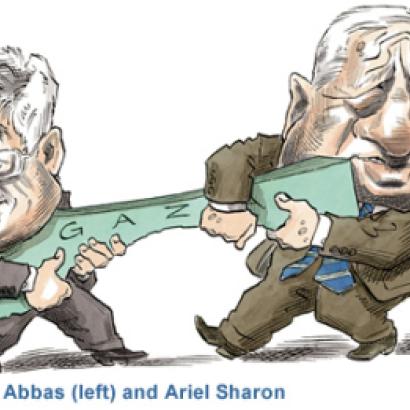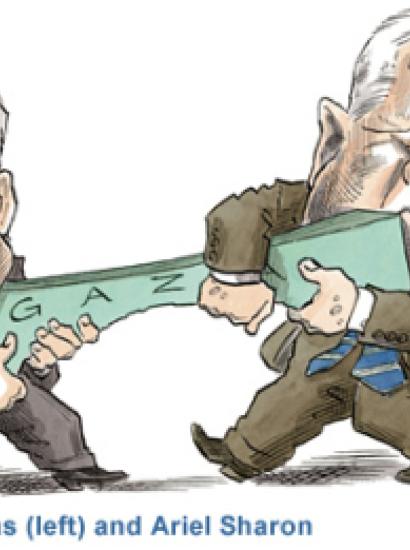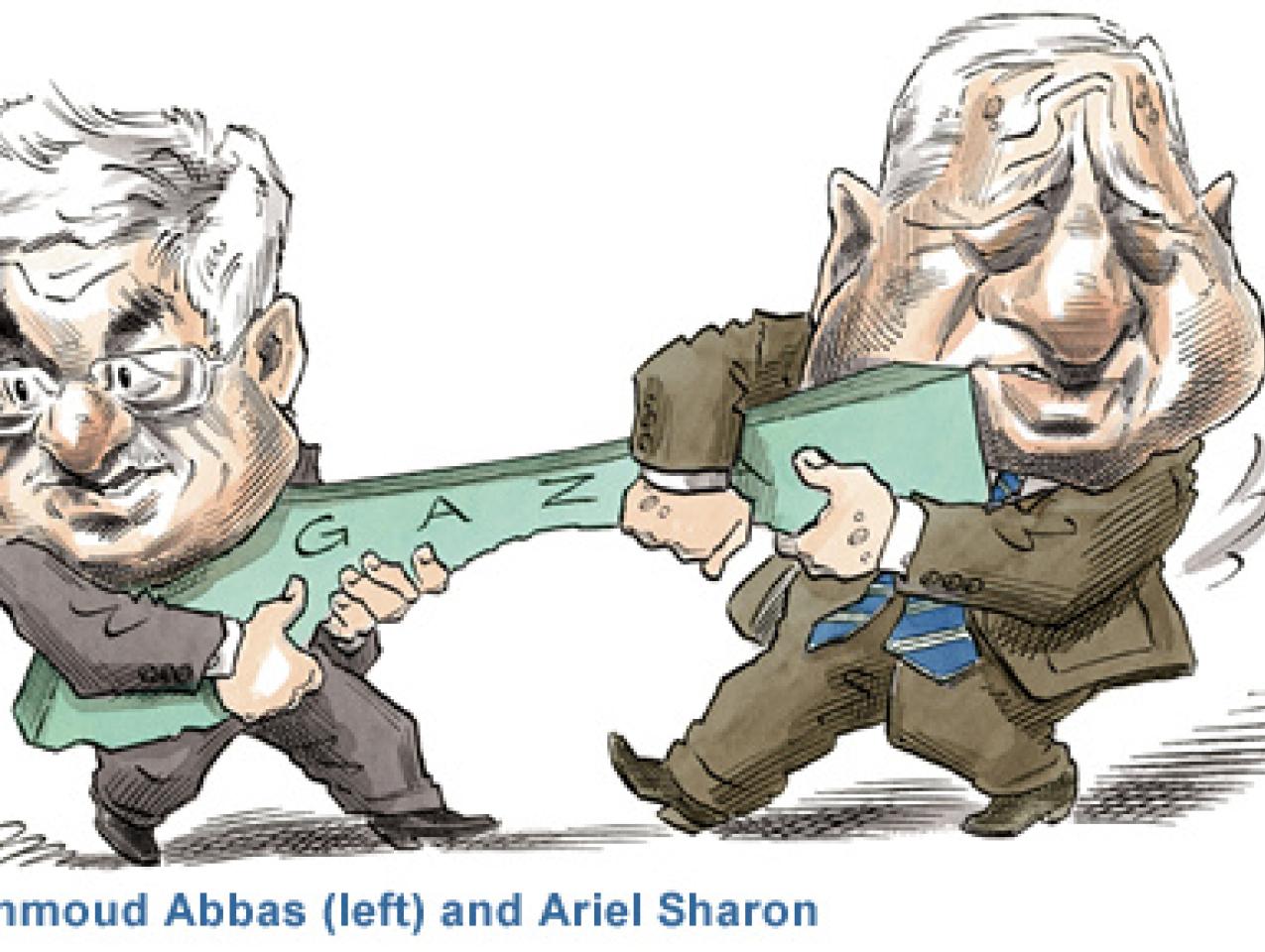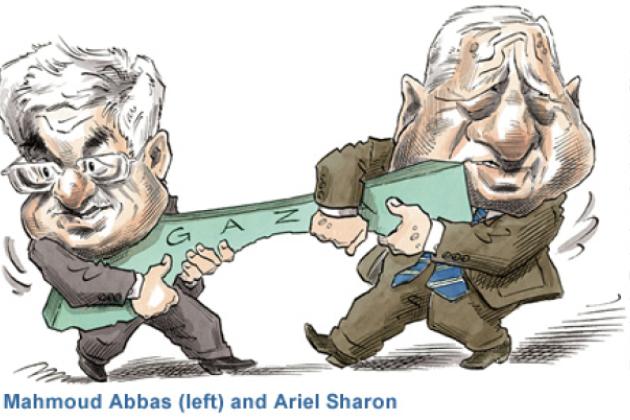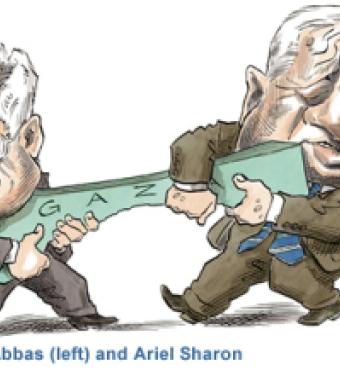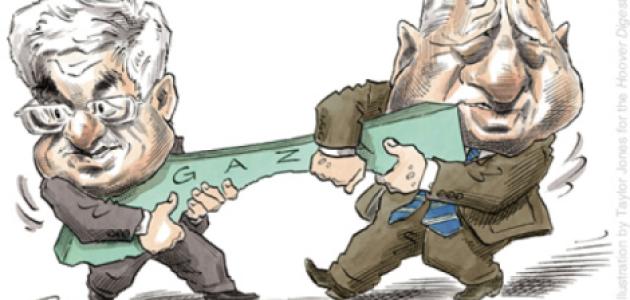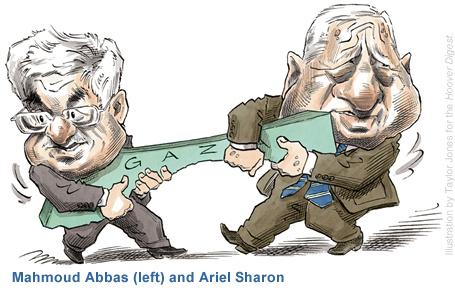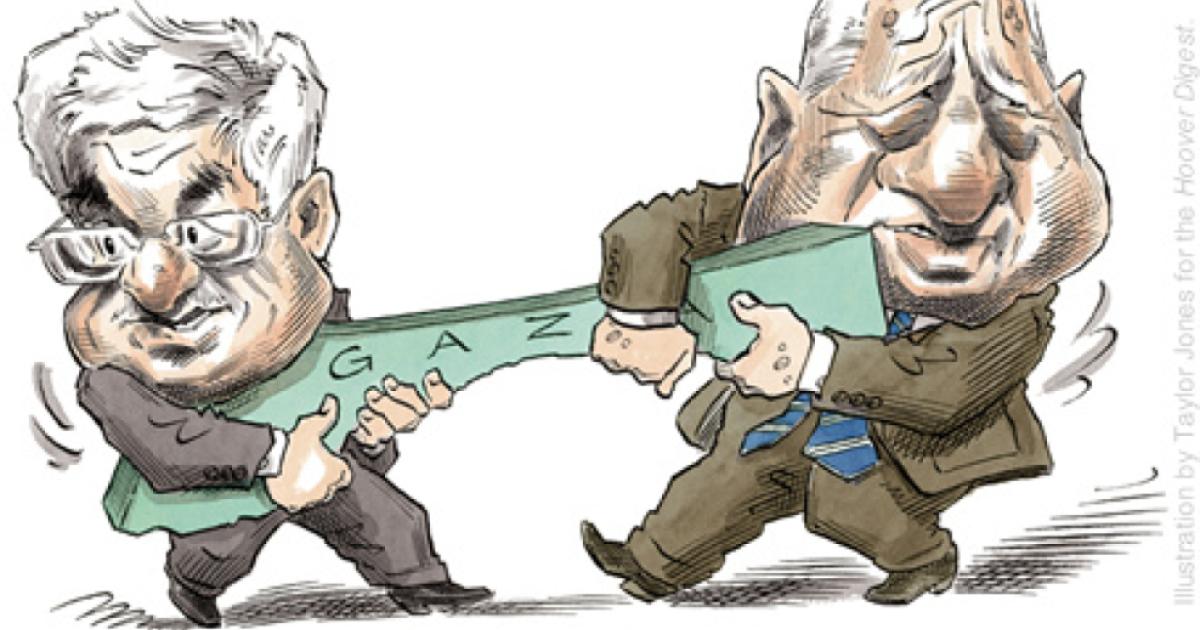For my morning interview in Ramallah—the informal Palestinian capital—I had passed through the Qalandiyah checkpoint in 15 minutes, flashing nothing but my passport to an Israeli soldier. But when I tried to return around 6 p.m., after an appointment in Jerusalem, the line was at a standstill and the wait, an estimated three hours. I reached for my cell phone and called my Palestinian fixer, Sanad, already in Ramallah. He told me to return to East Jerusalem and hire a cab. “He will bring you to the checkpoint for foreigners. You will be here in no time.”
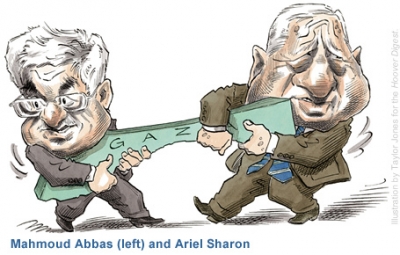
“No time” apparently discounted a blistering 40-minute ride through the hills and wadis, but once at the checkpoint the line was, as advertised, short. This time, however, the soldiers questioned my daughter, Marni—who served as my assistant—and me thoroughly, finally asking, “Are you Jewish?” When we acknowledged that we were, they refused to let us pass. “We can’t guarantee your safety in Ramallah,” the best English speaker explained. “The terrorists could kidnap or kill you.”
Press credentials proved useless. Pleas of discrimination were ignored. Forty minutes of calls to Israeli Defense Forces (IDF) offices finally got us through the checkpoint, too late for the appointment but not for a parting scold: “If I saw the man you want to interview, I’d arrest him.” Driving back to Jerusalem, our Palestinian driver had some advice of his own: “Never say you’re Jewish around here. It complicates things.”
Things were complicated enough. Prime Minister Ariel Sharon, who throughout his career had proclaimed as a settlement anywhere two or more Israelis congregated, took a page from the book of a politically down-and-out peace camp—unilateral disengagement—and turned it into a dramatic evacuation of all Gaza settlements together with a token four settlements from the West Bank.
By the time I arrived in late July, Sharon’s plan had been disowned by the Central Committee of his own center-right Likud Party. More dramatically, the religious Zionists, who had established settlements deep in the heart of the Palestinian West Bank, including scores of illegal “outposts,” had converged on Gaza. They hoped to join forces with resisting settlers to make the withdrawal so searing an experience that this first event would also be the last. Two leading rabbis urged IDF units to ignore orders to close the settlements; two others invoked a pulsa denura curse on Sharon, enlisting God’s angels to kill him. This is distinctly unfunny to a nation that saw similar invective precede the assassination of Yitzhak Rabin. But as 40,000 IDF troops and special police trained in the desert set about their task, it became evident that neither settler nor sympathizer could seriously threaten the evacuation.
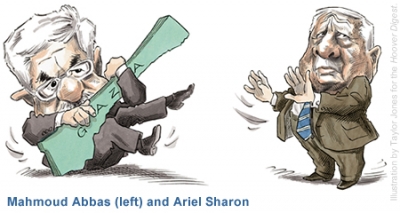
Looking Backward
I was no stranger to Gaza, for I had first visited the Gaza Strip and the Israeli settlements that had been stapled to it as an ABC News correspondent during the mid-1980s. Even then the territory was bursting with squalid refugee camps, monuments to the giddy Arab belief that only by resisting resettlement would they one day return to homes lost inside Israel in the 1948 war. Gaza City then was dirty and dangerous, with cars and cabs competing frantically with horse and donkey carts for every inch of available space. Suddenly, in the Israeli settlements, a different world came into view, one of comfortable homes and swimming pools, where hothouse vegetables and flowers were grown and flown to Europe fresh each day so the Dutch and Germans and French could enjoy a touch of spring in midwinter. Palestinians, if they were lucky, could perform menial work for local Jews or line up for the buses each morning and work in Israel as day laborers, waiters, gardeners, and trash collectors. Palestinian banks? No such thing. Competing in markets serviced by Israel? Forget it. Opening a home sweatshop to stitch some clothes or Israeli footwear? Now you’re talking, Mahmoud.
At the time, Israelis in Gaza numbered fewer than 5,000, with Palestinians numbering more than 600,000. Israelis had first claim on the water supply and the best available land.
Egged on by the domestic intelligence agents of Shin Bet (Israel’s FBI), who sought to undercut the PLO, the radical Islamic group known as Hamas was gathering strength in the refugee camps. Hamas members talked in terms of an apocalyptic struggle with the Jewish state. When I spoke to Israeli settlers about the state of affairs in Gaza, some expressed surprise that a Palestinian could object to a nearby family planting flowers and vegetables just because that family was Jewish. “If they don’t like it, let them move,” was a common refrain.
Israeli leaders on the right argued that Jews should be free to settle anywhere in the land of Israel, while centrist leaders claimed that the settlements had value as defense outposts or potential bargaining chips, useful as long as the PLO remained committed to terrorism and the replacement of Israel with “a secular democratic state in all of Palestine.”
Time and Space
So change was called for, even long overdue. But why Sharon? And why now? When I put that question to a senior Western diplomat, he reminded me that, in December 2003, when Sharon first talked about reducing “as much as possible the number of Israelis located in the heart of the Palestinian population,” he was fighting off pressures from a number of fronts. He did not want to get pushed prematurely into “roadmap” negotiations brokered by a quartet of parties—the United States, the United Nations, the European Union, and Russia. Neither did he want as a negotiating partner a Palestinian team led by Yasser Arafat with a rising Hamas nipping at his britches.
Sharon also wanted to deflect U.S. attention from other proposals making the rounds that he felt would give away too much, including one hammered out in Geneva by an unofficial group of Israelis and Palestinians that then–Secretary of State Colin Powell liked so much he had invited the authors to Washington.
Meanwhile, even hard-headed Likud types were warning Sharon that the rapidly growing Palestinian population would soon surpass the Jewish population in the combined territories of Israel, Gaza, and the West Bank, meaning that Israel could be Jewish or democratic but not both. By “giving up” 1.4 million Palestinians of Gaza and relocating a mere 8,500 Jews, Sharon could buy both political and demographic time, leaving the question of a Palestinian state to what the Western diplomat called “a slowly evolving arrangement that ends in a shape nobody sees now.”
Demography was, of course, only part of Israel’s problem. Security was even more compelling. Gaza, with its massive refugee camps, radical-breeding poverty, fierce Hamas presence, and battles between ancient family clans, posed an unremitting threat to the settlers who lived there and the soldiers who had to defend them. Since October 2000, when the second Intifada began, Gaza’s Jewish communities suffered more than 14,790 attacks by automatic weapons, mortars, Qassam missiles, infiltrations, anti-tank rockets, and car bombs—killing 149 civilians and soldiers.
With Gaza safely back in Palestinian hands without the settlements, it poses far less of a threat to the state of Israel. One reason, say military and intelligence officials, was that 10 years ago a fence was constructed—described by military people as an integrated detection, defense, and pursuit system—which has never once been defeated by would-be infiltrators, assassins, or suicide bombers and which has served as the prototype for the far more ambitious system now under construction on the West Bank.
Politically, Gaza today is a vastly different place from the one I surveyed in 1985–86. Thanks to the Oslo Accords, Arafat and his fellow exiles were able to return in 1994, establishing Gaza as his governmental headquarters. Despite massive corruption, little political freedom, and the proliferation of police, security, and local militia units, something close to political self-rule developed. Thus when Arafat died and Mahmoud Abbas (Abu Mazen)—himself a Gazan—was elected his successor and the Israelis began their withdrawal, at least a crude infrastructure was in place to talk about how to educate children, administer welfare, and fashion an approach to economic resuscitation. What’s more, Israel’s withdrawal from Gaza would be total.
Yes, the Israelis could impose security conditions for using the airport or building a port, and, yes, they would control access to the West Bank and Israel itself. But the boundaries of Gaza would still be those that existed prior to the 1967 war. It would be Gaza’s own Palestinian establishment that would develop the institutions of statehood and establish the rule of law, either bringing competing sources of power, such as the Hamas militia, to heel or suffering the consequences of anarchy.
Not all the settlements marked for disbanding were in Gaza. A symbolic four settlements, with only a few hundred total residents, were in the northern West Bank many Israelis call Samaria. A few hours’ drive around the West Bank underlines its vastly different circumstances. Here the settlement closings were accompanied by no Israeli withdrawal, the IDF reserving the right to come and go as security demands. Israeli checkpoints continue to dot the landscape, producing delays that make life difficult and cripple the economy. Israeli jails bulge with Palestinian prisoners—as many as 9,000 at last count.
The fence is, without doubt, a bulwark against suicide attack but also, with every ambitious deviation from the 1967 borders, a means of asserting control that falls just short of sovereignty, blocking Palestinian access to disputed East Jerusalem sites and seeking to fashion organic links between such large settlements as Ariel and Gush Etzion and cities like Tel Aviv and Jerusalem. The smaller settlements seem to be growing from every hill and knoll, with little distinction between legal and illegal status. A study commissioned by the prime minister’s office early in 2005 concluded that most illegal outposts, including those that lawlessly appropriate private Palestinian lands, are protected and financed by the collusion of the very government agencies that should be regulating them.
During my period with ABC in Israel, I ran a five-part series for Good Morning America called “Land for Peace,” which described how the proliferation of settlements was creating facts on the ground that could complicate future negotiations even more than such tricky issues as mutual recognition and refugees. Even today I don’t know whether I was right. The settlements are a big issue. But so are refugees and the status of Jerusalem.
The failed 2000 talks at Camp David and the bloody suicide bombings that followed discredited the Israeli left, leaving most Israelis convinced that the Palestinians could never be trusted and breathing life into the sails of those urging a different approach.
“We have no negotiating partner,” says Dan Schueftan, the academic who coined the term unilateral separation. “To Israelis the question is one of survival,” he says. “To Palestinians it is one of justice. Neither side will budge.” Schueftan would have Israel appropriate the big West Bank settlement blocs, relinquishing all the others unilaterally.
Now the Palestinians want to go to the final stage of the so-called roadmap procedure agreed upon by the United States, the United Nations, the European Union, and Russia and talk about borders, refugees, settlements, and Jerusalem. But the Israelis say the Palestinians must first dismantle terrorism and undertake a period of statehood with provisional borders until a final deal is hammered out.
A Matter of Trust
To Avi Dichter, who ran Shin Bet throughout the second Intifada, the Abbas crowd is as reluctant to address terrorism as was Arafat and his henchmen. He recalls occasions when Shin Bet received word of a suicide mission about to be launched. “We would turn the information over to the Palestinian Authority and instead of looking for the terrorist, they would look for the source of the information. We burned a lot of sources that way.”
He is bitter over the world’s failure to appreciate the extent of Israeli civilian losses during the second Intifada, which began in October 2000 and lasted about four years. Dichter says that 70 percent of the 1,078 who died and 6,000 who were seriously injured were civilians. (The U.S. equivalent, given population disparity, would have been 50,000 killed and 300,000 wounded.) The number of casualties and the fact that terrorists require communal support justify, in his belief, the harsh measures still operating on the West Bank.
On a steamy morning in Ramallah I was introduced to Sheik Hasan Yousef, the Hamas leader on the West Bank. Courtly, almost dapper, he spent part of his time criticizing U.S. policy for its heavy-handed support of Israel and the other part declaring his organization’s desire for improved relations with Washington. Like his senior Hamas colleague Sami Abu Zuhri, whom I would meet in Gaza a few days later, Yousef interpreted the Israeli pullout as “a victory for our people. Maybe the resistance in Gaza had something to do with it.” Zuhri went a bit further, saying the move proved both the value and the continuing need for “armed resistance against the Israeli occupier.”
Despite Israeli concerns, both pledged that Hamas would permit the withdrawal to occur without firing Qassam rockets or taking other action to embarrass the Israelis. “We want Israel to pull out of our lands and we will not put any problems in front of this, and there will not be any shooting on our side during this disengagement,” said Yousef. Then he added, “Hamas has integrity. We are not like Fatah [Arafat’s faction, which still dominates the PLO and governing Palestinian Authority (PA)]. When we say something, we do it.”
Some weeks after we talked, Yousef was the target of an unsuccessful assassination attempt. Still, he refused to discuss disarming his faction with the PA. Shortly after reiterating his refusal, he was arrested by the Israelis.
The PA continues to seek political compromise with Hamas. At this spring’s Cairo meeting, for example, Hamas agreed to a cease-fire with the Israelis of indefinite duration. But to obtain the accord, Abu Mazen pledged to maintain the right of return for Palestinian refugees, a position that—if maintained—would doom future talks, just as Yasser Arafat’s insistence on the right of return doomed the 2000 effort.
Abu Mazen also called for all militias to be subordinated to the central Palestinian Authority but showed no intention of enforcing the plea when Hamas and other factional militias declined the invitation.
Most analysts suggest that Hamas enjoys the support of about 35 percent of the Palestinian population in Gaza, less on the West Bank. Members of Hamas will run in legislative council elections scheduled for January 25. They are in no haste to attack Israel, fearing both brutal retaliation and the loss of public support. But one should take them at their word that their long-term strategy is to use military means to eradicate the Jewish state.
Over the weeks, I watched sympathy mount among Israelis for the Jewish settlers in Gaza. The Gush Katif residents of Gaza were not the crazies of Hebron or the illegal West Bank outposts whose gun-toting Wild West demeanor and religious fanaticism often embarrass Israelis. These were dedicated, relatively simple folks who had been lured to Gaza by the government’s promise of a better life and whose own commitment could be measured in the deaths of friends and loved ones. Now they would be moved, forcibly if necessary, and their homes—too small for huge Arab families—pulverized, their synagogues destroyed, their dead dug up to be buried again once the families resettle.
Facing the Music
Behind the scenes, mainstream Palestinian leaders had mixed feelings about the unilateral Israeli move. Yes, it was good to see them go, but both Gaza and the West Bank were dependent on a relaxation of the counter-terrorism regime that had been dominating their lives. Without such relaxation, Gaza could become a hopeless prison, incapable of beginning the long march to economic and political health, even with generous outside help and investment. One Palestinian economist told us that some 400,000 Gaza residents—presumably refugees—would eventually have to move to the West Bank for the Gaza economy to gain some breathing space.
The PA leadership, driven by even more bombastic Hamas rhetoric, sought to present the withdrawal as a precedent for future victories at the negotiating table or elsewhere. In Gaza, Abu Mazen told a screaming outdoor rally, “Today we are celebrating the liberation of Gaza and the northern West Bank; tomorrow we will celebrate the liberation of Jerusalem.”
Ariel Sharon also spoke to his countrymen on the eve of withdrawal. In a sober speech, he acknowledged his own history as one who “had believed and hoped we could forever hold onto Netzarim and Kfar Darom. But the changing reality in the country, in the region, in the world, required of me a reassessment and a change of positions.” No longer could Israel be the master of more than a million refugee-camp residents who “live in poverty and despair, in hotbeds of rising hatred with no hope on the horizon.”
To prevent these words from becoming the opening lyrics to his own swan song, Sharon faces tough political days. Convinced his own right-wing Likud Party would never back his policy, Sharon quit and announced he would form a centrist party of his own. The Likud reins will likely be seized by Binyamin Netanyahu, the hard-line former prime minister. The emergence of a feisty “peacenik” named Amir Peretz to lead Labor completes Israel’s current three-ring circus.
But my sense is that Palestinian problems are even more formidable. Without the power to control terrorism or the moral authority to put a breakthrough deal on the table, Abu Mazen and his negotiating team may well have to accept the sort of provisional arrangements that will only compound their sense of historic injustice.








